< Motivation and emotion < Tutorials < Needs
Motivational & emotional states associated with brain structure: Sub-cortical
| Brain structure | Location | Associated motivational or emotional experience |
| Amygdala | 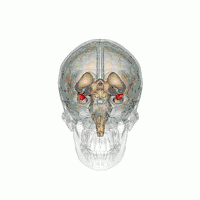 |
Detects, learns about, and responds to the stimulus properties of environmental objects, including both threat- and reward-eliciting associations. |
| Basal ganglia | 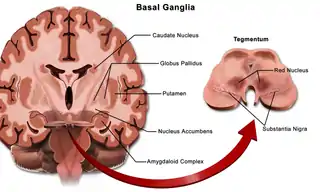 |
A group of subcortical nuclei including the caudate nucleus, putamen, substantia nigra, and globus pallidus. Regulates premotor and motor cortical areas so that voluntary movement can be performed smoothly. Serves as a behavioural inhibitor or "off-switch". Influenced by signals from many parts of the brain, including the prefrontal cortex. |
| Hypothalamus | 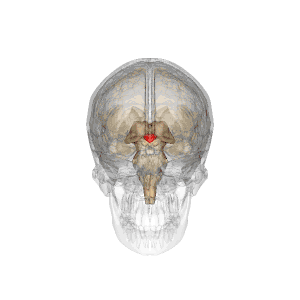 |
Responsive to natural rewards in the regulation of eating, drinking, and mating. Regulates the endocrine and autonomic nervous system. |
| Nucleus accumbens | 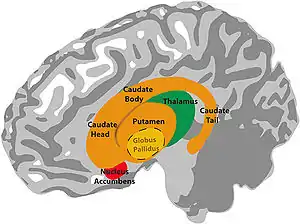 |
Brain's reward centre. Responds to signals of reward via dopamine release from within the ventral striatum to produce feelings of pleasure and liking. |
| Reticular Formation |  |
Phylogenetically old structure which regulates arousal, alertness, and sleep/wakefulness. |
| Ventral striatum | 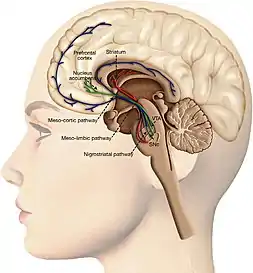 |
Part of the dopamine-based reward system. Manufactures and releases dopamine to the nucleus accumbens, having received the message to do so from the ventral tegmental area. |
| Ventral tegmental area |  |
Starting point in brain's dopamine-based reward centre. Manufactures and releases dopamine. |
Note: Based on Reeve (2018), Table 3.1.
Motivational & emotional states associated with brain structure: Cortical
| Brain structure | Location | Associated motivational or emotional experience' |
| Anterior Cingulate Cortex |  |
Monitors motivational conflicts. Resolves conflicts by recruiting other cortical brain structures for executive or cognitive control over basic urges and emotions. |
| Dorsolateral prefrontal cortex | 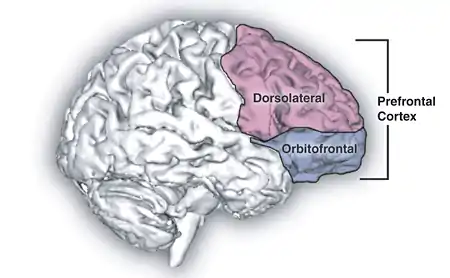 |
Evaluates the learned emotional value of environmental events and possible courses of action. Responsible for control over urges and risks during the pursuit of long-term goals. |
| Insula cortex |  |
Monitors bodily states to produce gut-felt feelings. Processes feelings associated with empathy, intrinsic motivation, risk, uncertainty, pain, and personal agency. |
| Orbitofrontal cortex |  |
Stores and processes reward-related value of events and environmental objects and events to formulate preferences and make choices between options. |
| Prefrontal cortex | _animation.gif) |
Making plans, setting goals, formulating intentions. Right hemispheric activity is associated with negative affect and "no go" avoidance. Left hemispheric activity is associated with positive affect and "go" approach motivation. |
| Ventromedial prefrontal cortex | 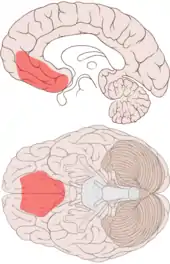 |
Evaluates the unlearned emotional value of basic sensory rewards and internal bodily states. Responsible for emotional control. |
Note: Based on Reeve (2018) Table 3.1.
This article is issued from Wikiversity. The text is licensed under Creative Commons - Attribution - Sharealike. Additional terms may apply for the media files.